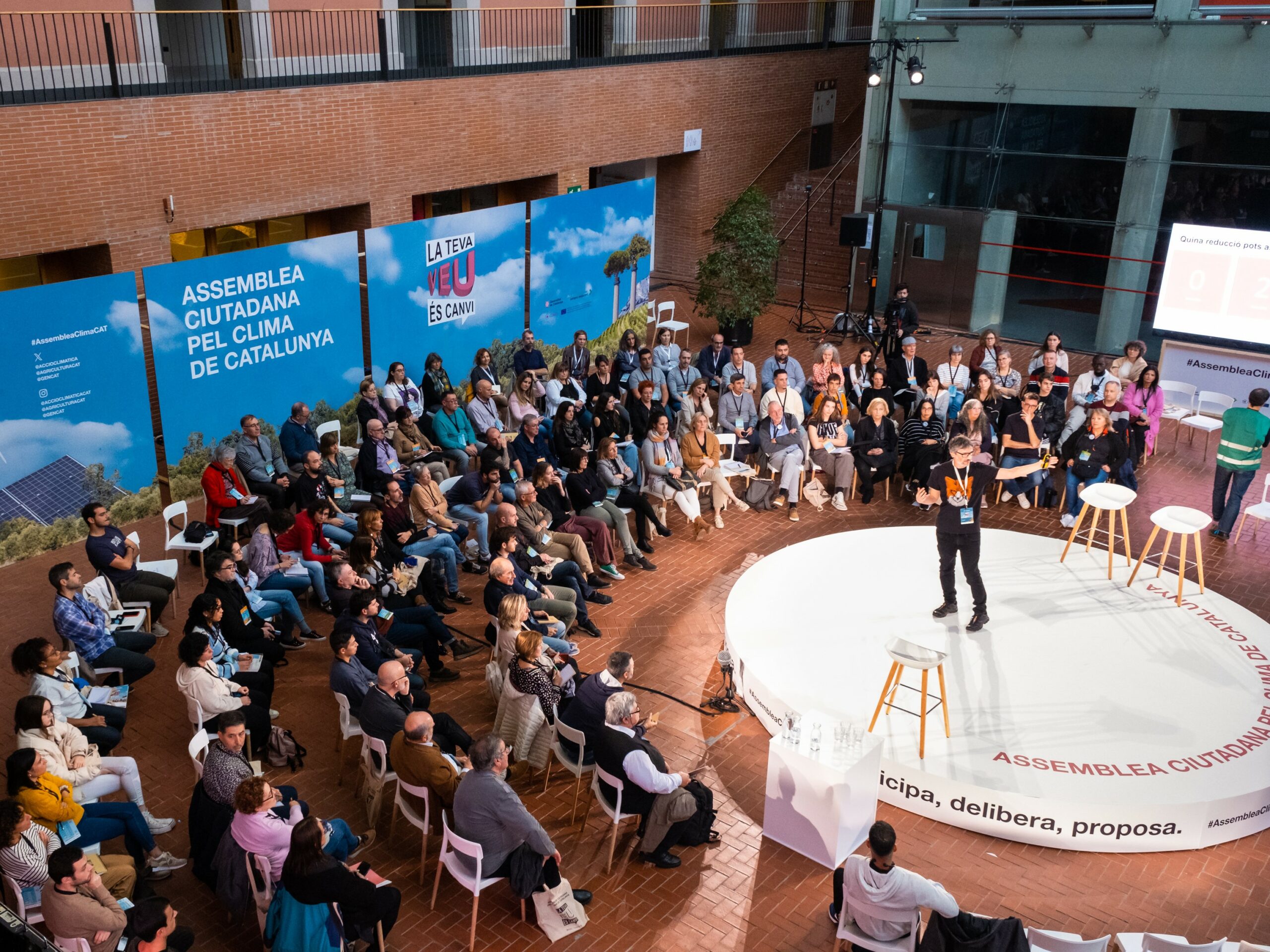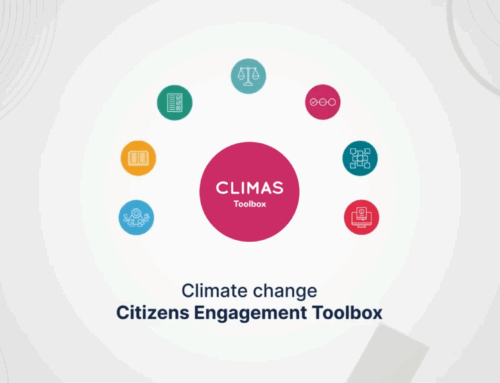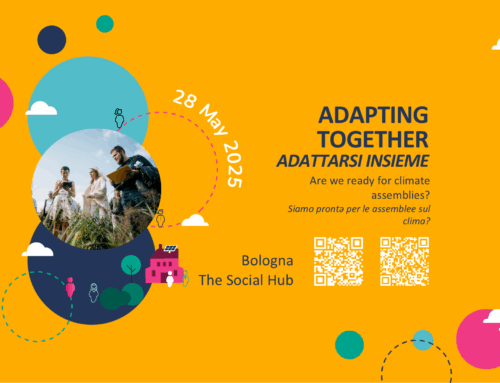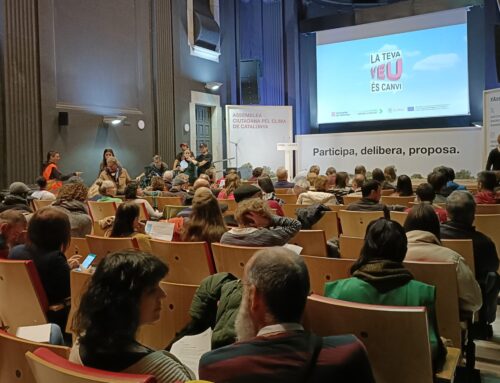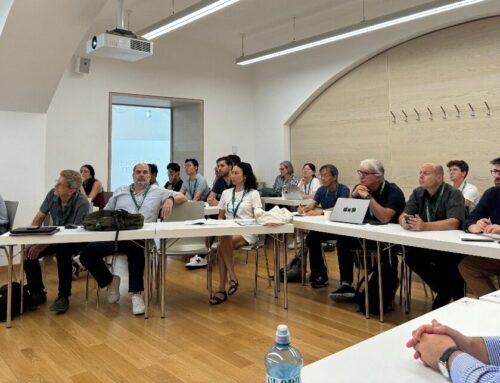One of the aims of the CLIMAS project is to distil learnings from climate assemblies (CAs), which have been done across Europe on local, regional, national, and international level. This exercise should produce an overview of cases of CA and a deeper understanding of their citizen engagement practices and the civic technologies which mediate and support them. There are numerous examples of CAs on local, regional, national, and global levels. This article provides an overview and describes current citizen engagement strategies employed in combating climate change.
Introduction
Traditional democratic practices have limitations in addressing climate change, necessitating the exploration of deliberative democracy as both an experiment in democratic renewal and a response to the climate emergency. Since the 1960s, advocates of deliberative democracy and greater participation have been experimenting with deliberative formats. Depending on their size, structure, and time allocated for the process, these formats can have different names, i.e., citizen juries, citizen assemblies, citizens’ panels, and consensus conferences. Applied in the realm of climate policy, they are usually referred to as climate assemblies (CAs) and are intended to provide a pathway for citizens and politicians to work together on climate decision-making.
CAs are characterized by the gathering of a random but diverse group of citizens to engage in a structured learning and deliberation process to produce recommendations about how to respond to climate emergencies and adaptation. Their outputs can be seen both on the level of the democratic process and content on democracy and climate change as well as mitigation measures. Challenges faced by CAs encompass aspects such as the design, implementation, governance, and utilization of civic technologies or platforms in an assembly. The CLIMAS model adopted from OECD and KNOCA divides a CA into four stages (1) idea of starting a CA, (2) the assembly process, (3) handing over recommendations, (4) evaluation and response to process.

1. Idea of starting a CA
The initial stages of setting up a CA are particularly resource-intensive due to the multitude of decisions and process dimensions that must be considered. The importance of adapting to the local context cannot be overstated. Guidelines from the OECD, KNOCA and others provide best practice models for setting up a CA. The role of the Commissioner of a CA is pivotal in the beginning of the process and the degree of “policy coupling” between the CA and the relevant policy apparatus. The commissioner is either a public authority or a civil society organisation (CSO), which initiates and sponsors an assembly. Commissioning a CA requires a keen understanding of the unique context, considering the conditions, needs, and opportunities that the process could provide.
The two primary routes in which CAs have been commissioned are top-down and bottom-up approaches. Depending on who initiates a CA, subsequent design decisions are implicated. Research suggests that processes originating within the political system are in general more likely to generate political momentum and commitment. Alternatively, when processes are initiated outside the established political system, there is a risk of perceived unwanted intervention or disturbance in democratic processes. These coupling choices involve trade-offs, with tight coupling emphasizing political ownership, facilitating ease in adopting outcomes, while loose coupling provides more independence, minimizing the potential perception of co-optation by political authorities. CA organizers must prioritize proper coupling between the CA and the political system to ensure legitimacy, protect transparency, maximize the impact potential of outcomes, and justify resource usage.
The delivery team is responsible for running the CA. They will vary in size and structure and commonly consist of (1) a coordinating body, (2) a scientific advisory body, and (3) an independent governance committee. Typically, national-level processes with greater budgets span several weekends, while sub-national processes commonly occur over a single day or weekend. CA commissioners often use online tools to reduce costs, a trend that has further accelerated since the COVID-19 pandemic. A hybrid option for CA might be preferably for participants in which there is a balance between not having to travel in-person to every meeting but still having some in-person meetings which were important for establishing social connections between participants which aids in online deliberation.
Agenda setting, mainly done by the commissioner, in partnership with other stakeholders and sometimes the delivery team as well, is a critical stage in the CA, particularly for building relationships with political and community stakeholders. After defining the CA’s remit, the topic, question, and agenda are defined. During this stage engagement strategies can enhance the process. The CA’s question should leverage its unique deliberative nature, addressing matters best answered by citizens, and encouraging the exploration of trade-offs between different courses of action and how citizens react to their proposition.
Random recruitment, or sortition, stands as a fundamental pillar in DMPs, serving as the mechanism to select assembly members who will represent the citizens of a specific context. National CA usually comprises 100 to 150 individuals, while sub-national assemblies may vary from 20 to 100 participants from initiation to completion, often involving a two-stage process. To avoid large societal segments being left out, there are often predefined upper and lower quotas for demographic groups in stages of recruitment. The CA composition should mirror the unique characteristics of each locality. Selection algorithms play a pivotal role in this, ensuring a randomized group with proportional representation of various social groups within the wider population. In addition to random stratified sampling, there is an option for purposive sampling, which involves deliberately adjusting the sampling from a specific dimension. In the pursuit of assembling a CA that truly represents the diversity of society, three guiding principles should inform the decision-making process: (1) randomness, (2) representation, and (3) equality (Flanigan et al., 2020; Gasiorowska, 2023). Attitudinal stratification has been proposed to counteract selection bias.
2. The assembly process
In the deliberation stage citizen engagement strategies come to the forefront. In practice, the actual implementation of deliberative facilitation methods often deviates from academic literature, as it requires flexibility and adaptation to real-life scenarios. In the deliberation stage, information is a key component of the curriculum and procedure, necessitating a multistakeholder approach to ensure the representation of diverse perspectives. Scientific and policy knowledge about adaptation measures is crucial, requiring experts to play a role in presenting this information to citizens (Beswick & Elstub, 2019). However, citizens can actively participate in the process by influencing the selection of experts. The weighting of expert knowledge is a crucial factor in determining the epistemic values emphasized in the deliberative process.
To ensure that diverse voices contribute to the assembly in addition to and beyond technical expertise, public engagement during the information provision stage is an option. Listening to participants’ feedback along the way and adapting the process to their needs is important. Diversifying the delivery of information can help participants with different learning styles (O’Malley et al., 2020). Citizen science initiatives and CAs share the goal of involving the public, but our research did not identify cases where citizen science was integrated into the context of a CA.
Facilitation is a vital professional skill necessary in CA, often requiring specialized training and consulting services to prepare organizers practically. Facilitation methods employed are diverse and adapted from various co-creation and methodological sources. Facilitators play a crucial role in creating inclusive, collaborative, and open spaces where participants feel empowered to express opinions, ask questions, and respect fellow members. Special attention is needed for online assemblies. Methods include working in smaller working groups, future scenarios, mental time travel exercises and the use of external engagement tools. Facilitators bear the responsibility to ensure the inclusion of all voices, particularly those from marginalized groups or else there is a risk of worsening exclusion (Lupien, 2018; Bächtiger & Beauvais, 2020). Failure to address these dynamics risks undermining the core objective of climate assemblies, which is to enhance citizen engagement and empowerment.
After the deliberative process, CA members proceed to draft, revise, and vote on final recommendations, culminating in collective decisions. Often voting platforms are used. Some CAs lean towards consensus-building while some use formal voting to arrive at negotiated recommendations and there are important trade-offs to consider in both instances. Machin (2023) advocates for ‘agonism’ in climate assemblies, which means rather than urging CAs only towards consensus, embracing disagreement as a path towards enrichment. Indeed, more recent practices show a shift from presenting consensus-driven recommendations towards transparent results that reflect varying levels of support within a CA. There is also a role to play in facilitating the recommendation and voting process through dynamic facilitation sessions.
3. Handing over recommendations, evaluation and response to the process
After the recommendations have been delivered to the authorities they address or are willing to receive them, there are several avenues for continued engagement that can significantly enhance the impact of a CA. One approach involves assembly members sustaining their involvement through personal advocacy or by petitioning for an extension of the process. While not universal, some CAs establish a special oversight committee early on dedicated to holding the government accountable for the final report and recommendations. Throughout the follow-up process, a survey can be used in a variety of ways such as evaluating member satisfaction with the execution of the process, the government’s response to the recommendations, and external citizen satisfaction with the recommendations. Examples of evaluation methods often include anonymous participant surveys, academic analysis, and independent evaluations by third-party organizations. Public events, press conferences, and inviting public witnesses to observe certain CA sessions can elevate engagement in this phase. These strategies offer several advantages:
- Publicizing recommendations to a wider audience
- Recruiting citizens to join follow-up advocacy efforts.
- Promoting accountability for action from public officials
With CAs often the challenge of low public awareness exists, primarily due to resource constraints within media and communication teams. Civic technology platforms, especially CA websites, play a vital role in connecting mini-publics and maxi-publics. Recent developments in AI, data analysis, and trend analysis have introduced digital tools that enhance innovation in democracy and citizen engagement. These tools encompass various functions, including synthesizing data, identifying trends, analysing sentiment, categorizing inputs, visualizing data and arguments, monitoring social media, and answering participant questions. While no cases have specifically addressed their role in climate adaptation and or engagement in policy making, there have been studies of similar AI tools in other deliberative forums and in defining possible courses of action to achieve the Sustainable Development Goals. Effective communication and media strategies are pivotal elements in maximizing the impact of a CA. Establishing communication methods during the initial design stages is crucial for ensuring the assembly’s saliency, impact, and legitimacy. Most assemblies use regular website updates, blog posts, and the dissemination of key assembly components, such as expert inputs, on platforms like YouTube.
Future Challenges
As we navigate the future challenges of citizen engagement in CAs, it becomes imperative to explore innovative approaches, including the incorporation of AI and machine learning (ML). By appropriately integrating AI and ML, assemblies can enhance their capacity for more robust and efficient processes, moving beyond traditional reporting and templated summaries.
An observation worth noting is the existing gap in the abundance of information between national and local assemblies. While national assemblies have been extensively studied, local assemblies often remain understudied, with limited accessibility due to language barriers and resource constraints. Local assemblies, operating on smaller budgets, struggle to produce extensive reports, update their websites, or translate materials, hindering the sharing of their valuable experiences. To address this gap, databases play a crucial role in collecting and disseminating information. Efforts should be made to communicate the importance of these databases among practitioners and researchers involved in climate assemblies. Updating these databases with local assembly experiences should be considered a best practice, fostering a collaborative knowledge-sharing environment.
The European Union’s initiatives to provide local geographical data on climate adaptation challenges are promising but still in their early stages. Increased awareness among CAs, practitioner networks, and research communities is essential to ensure these initiatives become integral best practices. This can significantly enhance the climate-geological specificity of climate CA remits and questions.
In essence, the call is not for additional guidelines in the design or implementation of CA but rather for better practices in sharing the backstage experiences and stories that contribute to the empirical evidence base. The knowledge repository of CAs needs constant updating to incorporate diverse evidence bases, acknowledging that the participatory nature of climate assemblies generates data unique to the interactions with the people involved. However, it is essential to recognize that despite the wealth of empirical evidence and knowledge, much of it remains inaccessible to the public, emphasizing the need for increased transparency and open access to foster a more inclusive and informed approach to climate assemblies. The potential for citizen science initiatives to enrich CAs is an area still to be discovered.
What data is this article based on?
Criteria for case selection of CAs were based on the primary criteria for CA:
- random selection of citizens, also known as sortition,
- informed deliberation
- production of recommendations and
- a focus on climate-related issues.
Cases with a broader focus on citizen engagement in the topic of climate change were included if they were informative about engagement amongst the broader public and the CA on the topic of climate.
Data collection included systematic desk research covering all signatory nations of the the European Union’ “Mission on Adaptation to Climate Change” with a focus on identifying ongoing or past CA processes within these localities and a literature search using Google Scholar, incorporating research papers and grey literature resulting from our stage-based approach. In the end, 80 cases of CAs were selected due to them meeting the four criteria mentioned earlier.
Desk research faced several challenges, primarily attributed to the prevailing practice of presenting CAs with an emphasis on outcomes rather than the experiential nuances of the process. Websites often lacked narrative descriptions of the lived experiences within the CA, hindering a comprehensive understanding of their unique qualities. In addition, the practice of using mainly private enterprises supplying digital platforms for public engagement limited access to information. In addition, there were language barriers for local CAs. Finally, there was a significant overrepresentation of CA in the United Kingdom.
Authors: Shauna Stack, Erich Griessler, Norina Wolfslehner, Elisabeth Frankus, Institute for Advanced Studies (IHS)
The CLIMAS Project has received funding from European Union’s Horizon Europe under Grant Agreement N° 101094021. Follow CLIMAS on LinkedIn, Instagram and X, or subscribe to the newsletter to stay updated with the latest activities!
